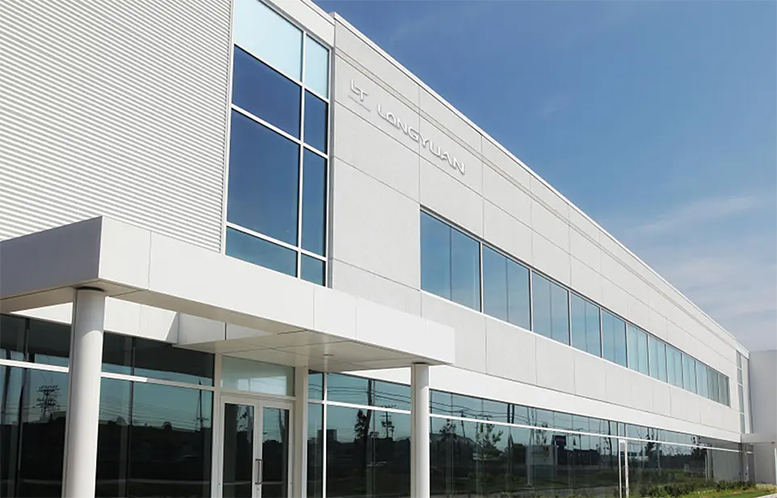
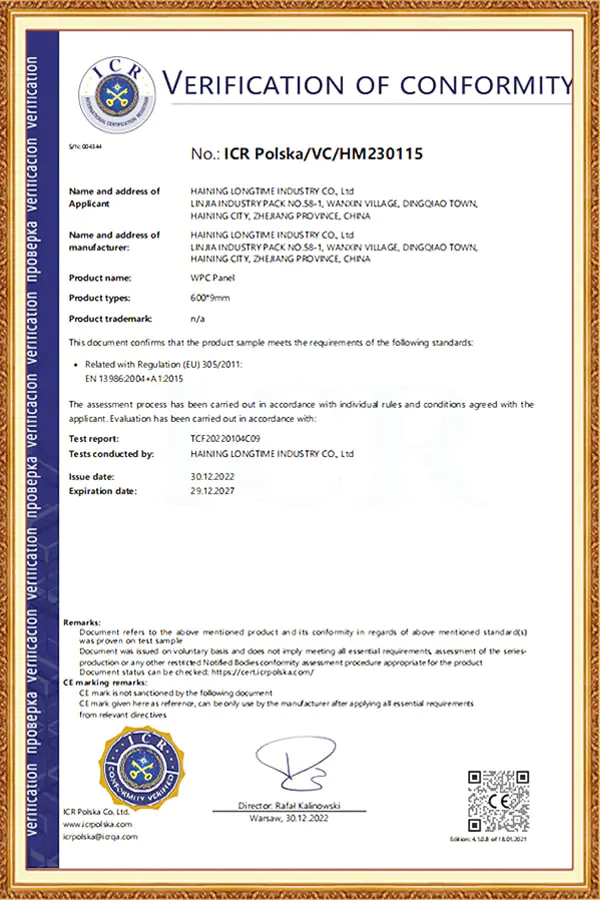
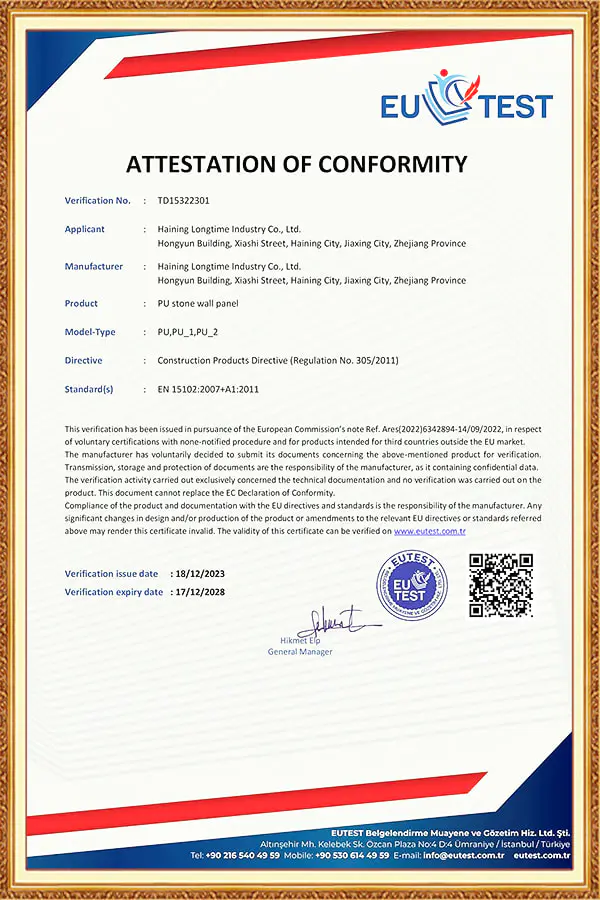
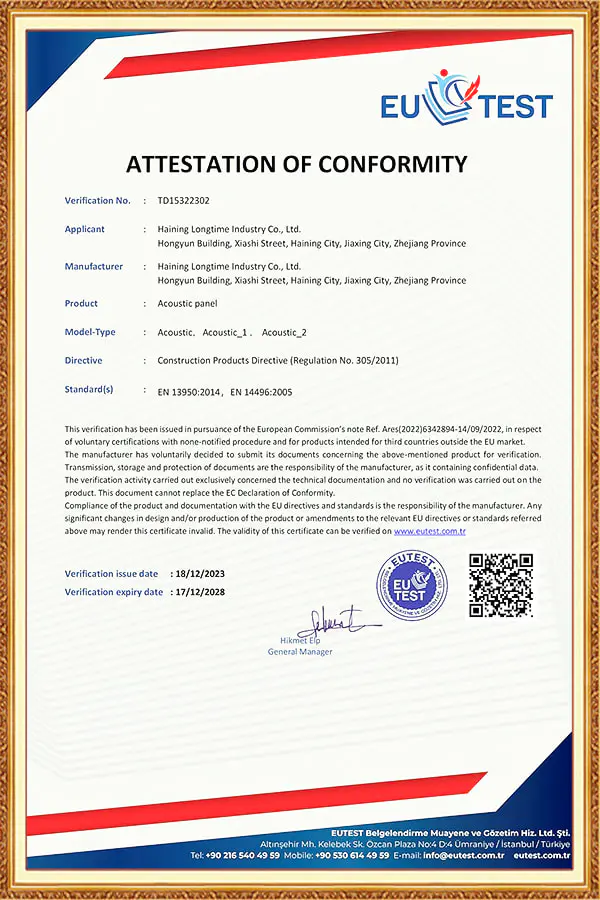
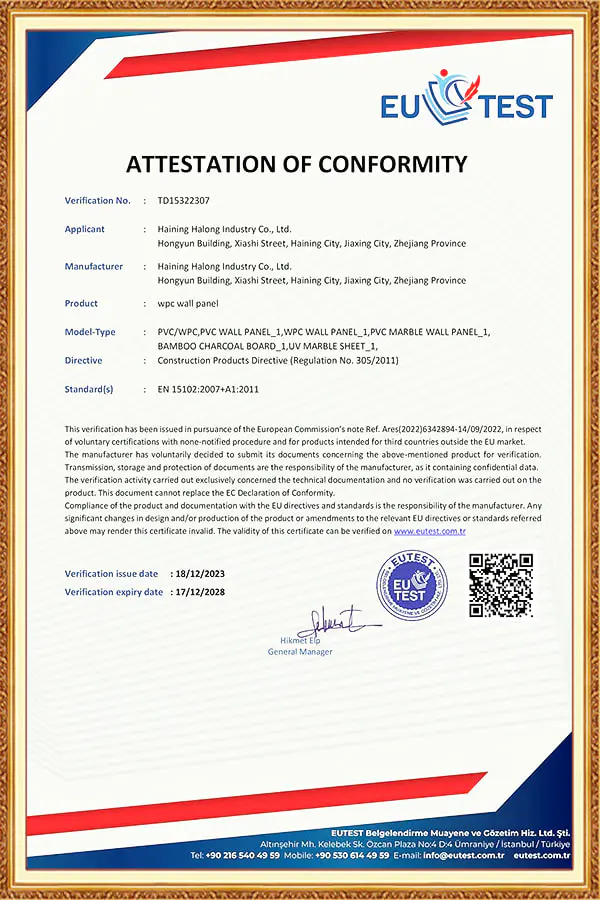
PVC ceiling panel has become a popular choice in modern construction due to its durability, low maintenance, and aesthetic versatility. However, improper installation can lead to warping, gaps, or premature damage. Understanding the correct installation techniques, preparation, and environmental con...
View MoreSPC wall panel has become a popular choice for modern interiors due to its durability, water resistance, and low maintenance. However, cutting and shaping SPC wall panels requires precision and understanding of the material to prevent damage. Improper handling can lead to chipped edges, uneven surfa...
View MoreBamboo wood fiber wall panel has gained widespread attention in modern interior and exterior design due to its eco-friendly properties, durability, and aesthetic appeal. Proper installation not only ensures a long lifespan but also maintains the panel’s structural integrity and visual appeal. Unders...
View MorePVC transfer film is a specialized material designed to transfer decorative patterns, textures, or functional coatings onto various substrates, including plastics, metals, wood, and paper. Unlike traditional adhesive films that remain on the surface, PVC transfer film acts as a temporary carrier—once the transfer process is complete, the decorative layer bonds to the substrate, and the film’s carrier layer is removed. This unique mechanism makes it indispensable in industries ranging from furniture manufacturing to automotive interiors.
At its core, PVC transfer film consists of three key layers: a carrier layer (typically made of PVC or PET), a decorative layer (containing pigments, patterns, or functional additives), and a release layer that ensures easy separation from the carrier. The PVC carrier provides structural stability during processing, while the decorative layer can be engineered to mimic textures like wood grain, marble veining, or metallic finishes. Additives such as UV stabilizers, flame retardants, or anti-scratch agents are often integrated into the decorative layer to enhance performance.
The manufacturing process involves precision coating and printing: the decorative layer is applied to the carrier via roller coating or gravure printing, followed by curing (using heat or UV radiation) to set the design. The release layer is then added to facilitate clean separation during transfer. This process allows for high customization, with patterns ranging from simple solids to intricate holographic designs.
The transfer mechanism of PVC transfer film relies on a combination of adhesion chemistry and mechanical pressure. Here’s a step-by-step breakdown of the process:
Preparation: The substrate (e.g., a furniture panel or automotive part) is cleaned to remove dust, oil, or contaminants, ensuring optimal adhesion.
Lamination: The PVC transfer film is positioned with its decorative layer facing the substrate. Heat (typically 80–150°C) and pressure (5–20 kg/cm²) are applied using rollers, activating the adhesive properties of the decorative layer.
Bonding: The heat softens the decorative layer, allowing it to conform to the substrate’s surface—even irregular or curved shapes. Chemical bonds form between the decorative layer and the substrate, creating a permanent attachment.
Release: Once cooled, the carrier layer (PVC or PET) is peeled away, leaving only the decorative layer bonded to the substrate.
This process is efficient, with production lines capable of handling up to 50 meters of material per minute, making it suitable for mass manufacturing. The key advantage lies in its ability to transfer complex designs onto substrates that would be difficult to decorate using traditional methods like painting or engraving.
PVC transfer film offers several critical benefits that set it apart from conventional surface treatment techniques:
Design Versatility: Unlike paint, which is limited by color mixing and texture, PVC transfer film can replicate nearly any pattern—from the fine grain of teak wood to the glossy finish of carbon fiber. Digital printing advancements now allow for photo-realistic designs, expanding creative possibilities.
Cost Efficiency: Mass-producing custom patterns with PVC transfer film is significantly cheaper than using natural materials (e.g., real wood veneer) or complex painting processes. It reduces material waste, as the carrier layer is often recyclable.
Durability Enhancement: The decorative layer, when reinforced with additives, resists scratches, UV fading, and chemical damage. For example, in kitchen cabinetry, PVC transfer film with a scratch-resistant coating can withstand daily use better than painted surfaces, which may chip or fade over time.
Consistency: Industrial transfer processes ensure uniform pattern application across large batches, avoiding the variations common with hand-painted or hand-carved decorations. This is crucial for brands maintaining a consistent aesthetic.
Eco-Friendliness: Modern PVC transfer films are formulated to be low in volatile organic compounds (VOCs), and their efficient material usage reduces environmental impact compared to methods that generate excess waste (e.g., stone cutting for countertops).
The versatility of PVC transfer film makes it a staple in diverse sectors:
Furniture and Interior Design: It is widely used to decorate cabinet doors, wardrobe panels, and flooring. For instance, a budget-friendly bookshelf can achieve a luxury walnut finish using PVC transfer film, matching the aesthetic of solid wood furniture at a fraction of the cost.
Automotive Sector: Car interiors—including dashboards, door panels, and armrests—rely on PVC transfer film for both decoration and protection. It resists wear from frequent contact and exposure to sunlight, maintaining a fresh appearance for years.
Electronics: Device casings (e.g., smartphones, laptops) often use PVC transfer film to create matte, glossy, or metallic finishes. Its thin profile (typically 20–50 microns) ensures it doesn’t add bulk to slim designs.
Packaging: High-end packaging for cosmetics or luxury goods uses PVC transfer film to add holographic or embossed patterns, enhancing brand appeal without the cost of metallic inks or embossing dies.
Building Materials: PVC transfer film decorates PVC pipes, window frames, and wall panels, transforming functional components into visually pleasing elements that blend with interior designs.
Industry advancements continue to expand the capabilities of PVC transfer film:
Functional Integration: New formulations include anti-microbial properties, making the film suitable for healthcare equipment or food packaging. Others incorporate conductive materials, enabling its use in touch-sensitive surfaces.
Eco-Friendly Formulations: Manufacturers are developing PVC transfer films with bio-based plasticizers and recyclable carrier layers, addressing environmental concerns. Some products now meet strict standards like the EU’s ECOCERT, appealing to sustainable brands.
3D Transfer Technology: Traditional films work best on flat surfaces, but 3D transfer films can conform to deeply curved substrates (e.g., automotive bumpers) using advanced heat-activated adhesives that flow into crevices.
Smart Films: Research is underway to integrate light-reactive pigments that change color with temperature or UV exposure, opening applications in interactive displays or safety signage.
While PVC transfer film offers numerous benefits, its effectiveness depends on proper selection and application. Factors like substrate material, surface texture, and environmental conditions (e.g., humidity, temperature) must be considered to ensure optimal bonding and longevity. For example, porous substrates like untreated wood may require a primer before transfer, while high-temperature environments (e.g., near ovens) demand heat-resistant films.
Haining Longtime Industry Co., Ltd. has contributed to advancing best practices in this field, focusing on tailoring PVC transfer film solutions to specific industry needs. By combining material science expertise with practical application knowledge, the company helps manufacturers overcome challenges like adhesion failure or pattern distortion, ensuring the film performs as intended in real-world settings.
PVC transfer film has evolved from a niche decoration tool to a foundational material in modern manufacturing, thanks to its versatility, cost efficiency, and durability. Its ability to bridge aesthetic appeal with functional performance makes it indispensable for industries seeking to balance quality and affordability.
As technology progresses, we can expect further innovations—from enhanced eco-friendliness to integration with smart materials—expanding its applications even further. For designers, manufacturers, and consumers alike, understanding PVC transfer film’s capabilities is key to unlocking creative, efficient, and sustainable surface decoration solutions.